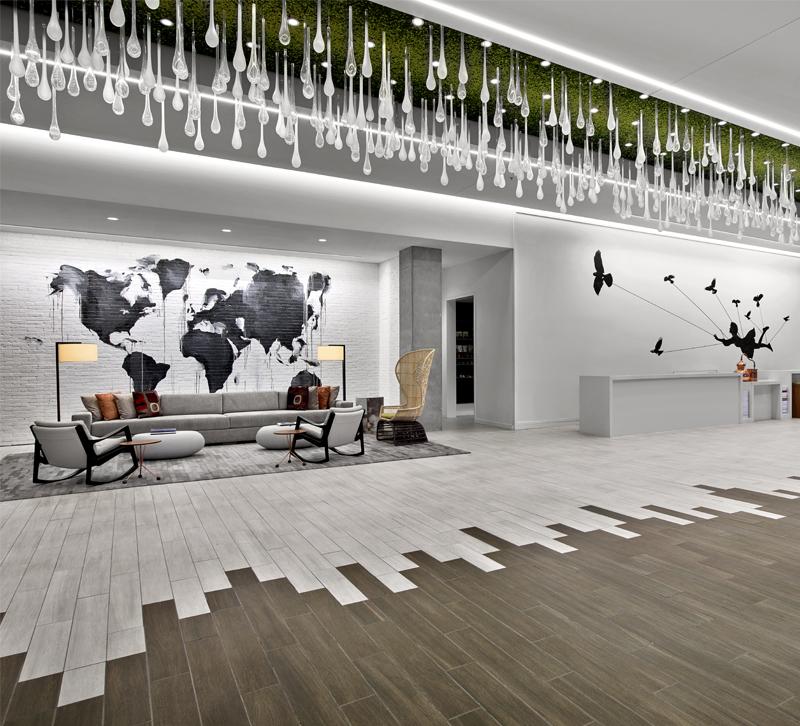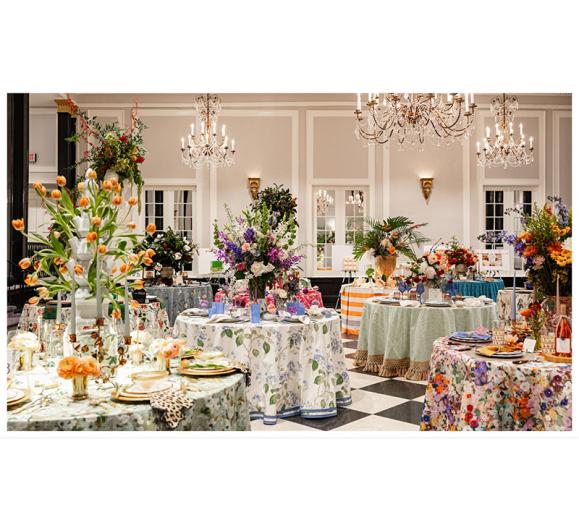Lauren Rottet — Founding Principal of Rottet Studio, and the first woman to be a fellow of both the International Interior Design Association and the American Institute of Architects — is well-known for her work with commercial office space and luxury high rises. But she is also fast becoming the go-to for hoteliers seeking soaring imagination.
Shortly after launching her eponymous firm Rottet Studio, an international architecture and design firm based in Houston with offices in Los Angeles and New York City and a presence in Hong Kong and Shanghai, Rottet made her presence known in the luxury hospitality scene with the revamp of The Surrey Hotel on New York’s Upper East Side. “They had seen an office project of mine that was published in a magazine, that was French, beautiful and contemporary and they reached out. They let their designer, who they were not happy with, go,” Rottet recalls, “and told me we had a year to finish the whole project.”
She jumped at the opportunity. “I love to travel and I’d been dying to do a hotel because with the good ones it’s all about design. They want a story and I had been storing up ideas in my head for 20 years. Everything I had always wanted to do just poured out and it was a big, big hit.”
With rave reviews from both Condé Nast Traveler and Travel + Leisure magazines, The Surrey, housed in a 1925 beaux arts building that was home to superstar chef Daniel Boulud’s Café Boulud, would become the number one hotel in New York for nearly a decade. A fine arts major in college before she made the switch to architecture, Rottet filled it with art she acquired at galleries and auctions, appointing the luxe rooms with Duxiana beds, Sferra sheets and Waterworks fixtures. The Bar Pleiades became a magnet for Madison Avenue’s fashion elite.
“That was 2008, the height of the recession, and it came on with such a big bang that we were almost instantly approached by others,” she says. “They were all renovations because no one could afford to do a new build. While the office business stopped flat, the hotels took us through the downtime and we loved the work. Now, while we still do high-rise residential [she is currently at work on the tallest all-residential building in the world, Central Park Tower in Manhattan], hotels are probably the largest part of our business.”
Following The Surrey, high-profile hotel projects included the Loews Regency Hotel in Manhattan, The James Royal Palm in Miami Beach, the St. Regis Aspen Resort and, most recently, the Renaissance Atlanta Airport Gateway Hotel by Marriott, a three-year project that would be eventually be named Best of Year Winner for Small Chain Hotel by Interior Design.
Alternate Flight Path
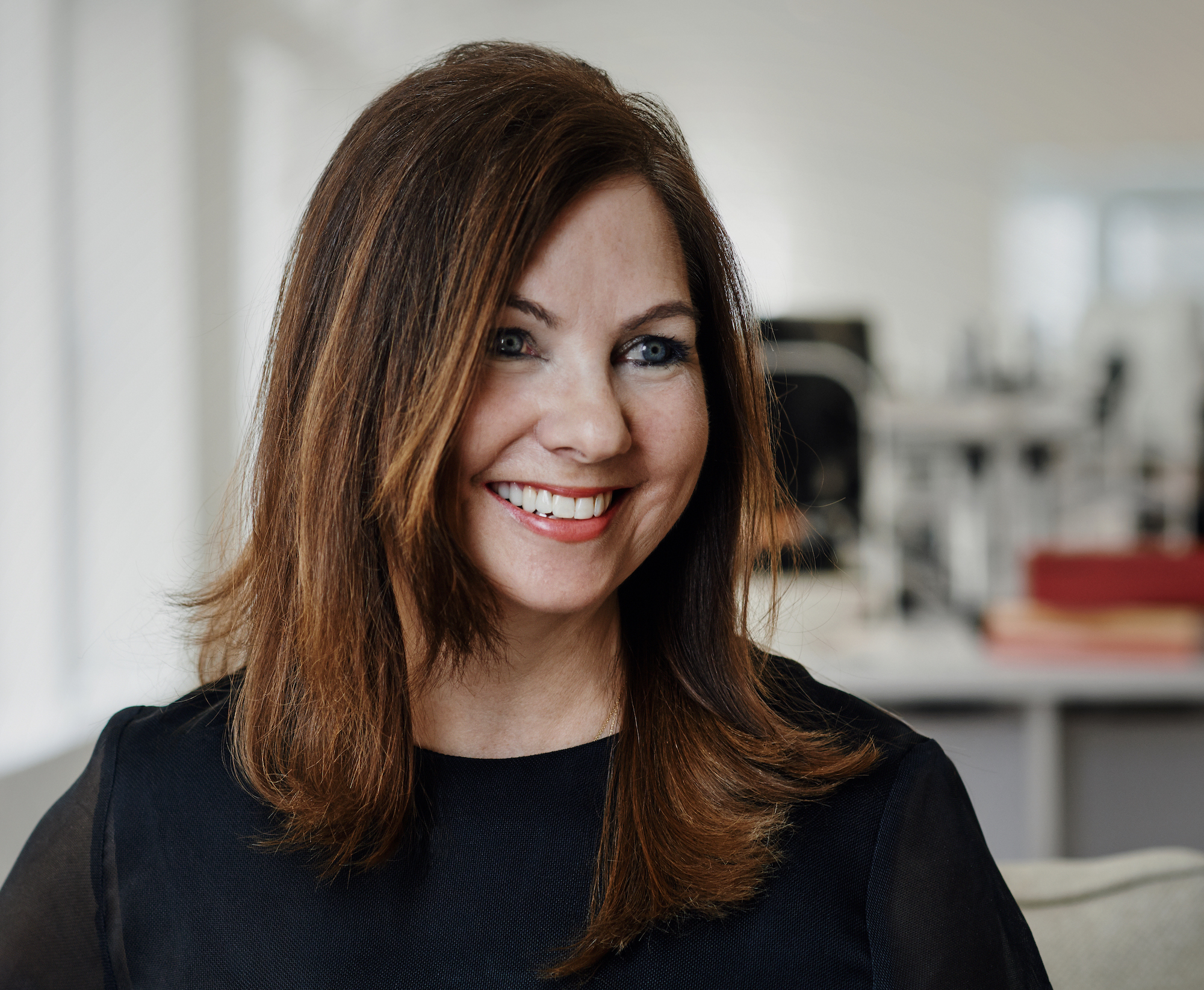
Unlike archetypal airport hotels — where the best thing that can be said about the accommodations is their proximity to a terminal — Rottet and her team set out to counter the genre cliché. The result is a four-star experience for the business traveler, filled with luxurious, modern comforts and amenities inspired by the local life, culture and energy of Atlanta, two minutes from the Hartsfield-Jackson Airport.
According to Rottet, the property’s development was grounded on rebranding, expanding and redefining the typical airport hotel for travelers seeking an escape. In keeping with the Renaissance brand mantra — “business unusual” — the project embodied three key themes: a high/low mix of materials and experiences, true placemaking, and the idea of looking, then looking again. As such, every detail is embedded with elements of surprise and discovery for travelers seeking creative experiences to amplify their personal lives.
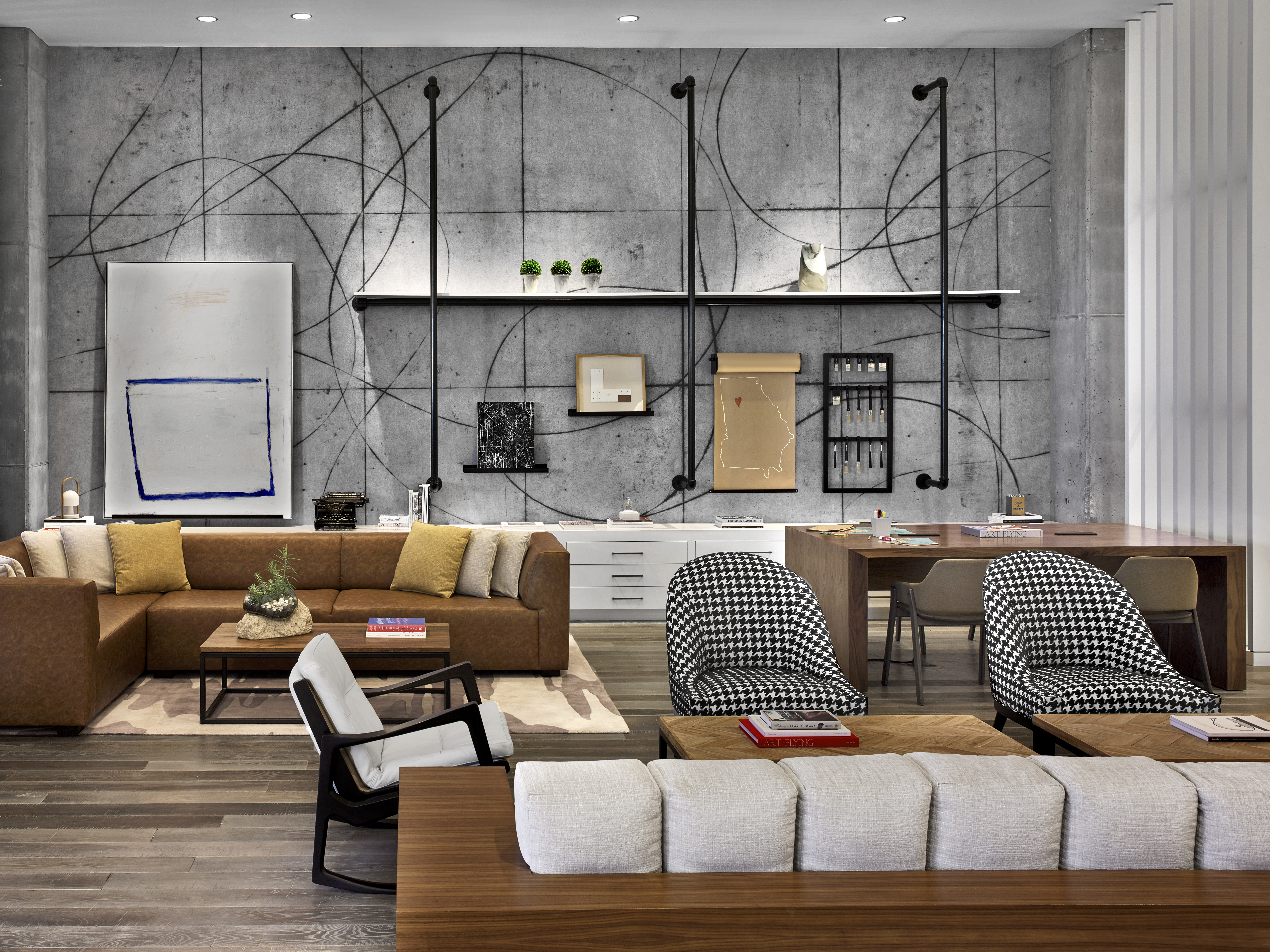
The hotel design follows a raw, industrial and natural theme, relayed through honest materials such as exposed concrete and unpolished steel. To emphasize the moment of arrival, guests enter through revolving doors into a large, open lobby intended to be a big living room with no boundaries. “It’s a calming, yet convivial environment in the hectic world of travel.”
A long, linear table functions as both the reception desk and “discovery table” and offers a site for communal gathering, where guests can check themselves in on iPads and also meet and collaborate with other people. “The virtual check-in process replaces the formal reception desk in a simple, yet high-tech solution.” Overhead, a custom light fixture resembling water dripping from moss infuses the lobby with greenery, while hip, modern chair swings echo the South’s porch swings. An original abstract mural, one of 11 in the hotel, displays a world map depicting the concept of Atlanta as a world community and business hub. The untraditional business center includes a co-lab space where guests have the opportunity to leave notes about their travels for fellow guests to read.
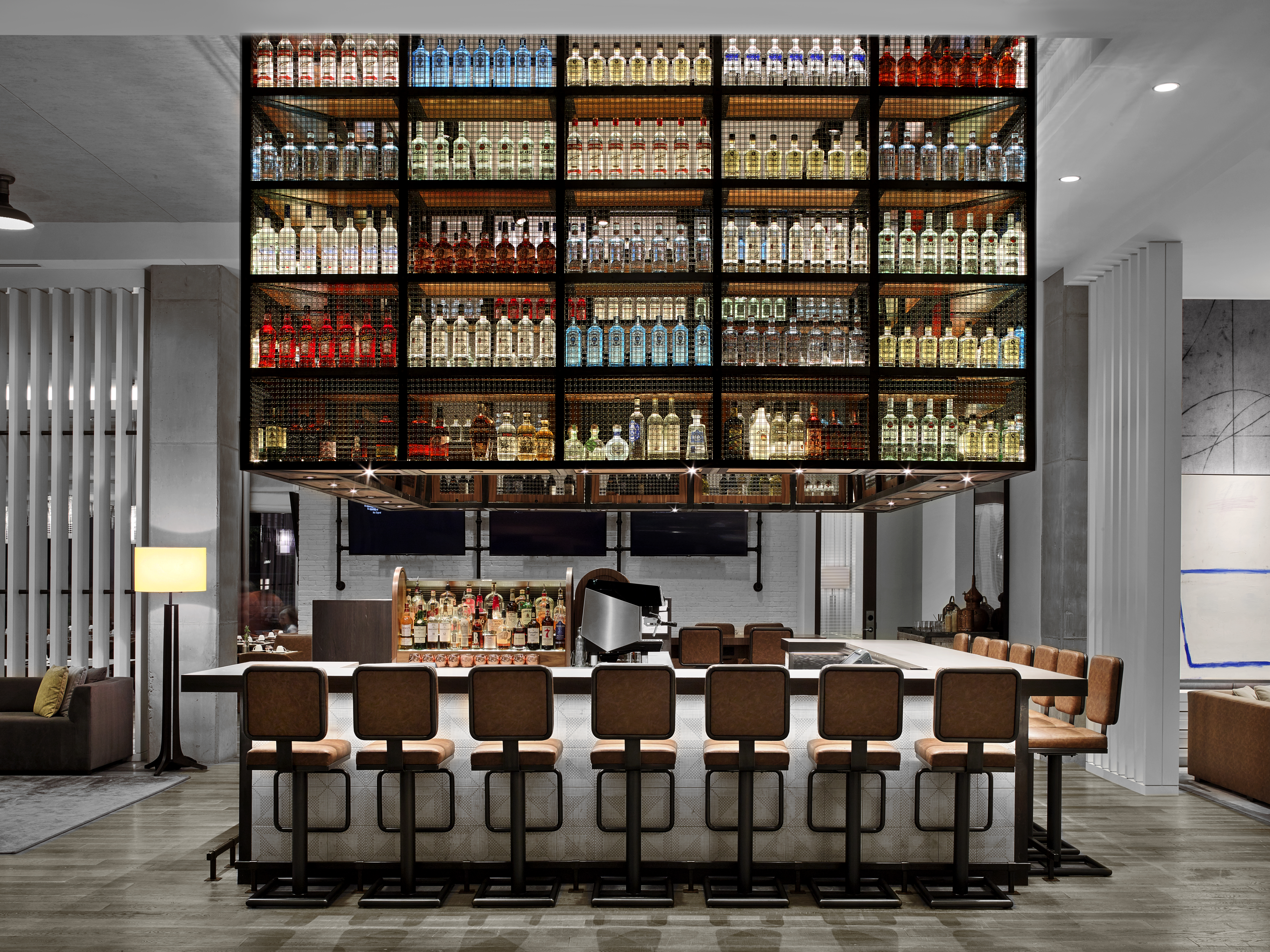
The public areas of the hotel each offer a unique point of view that reinforces different parts of a traveler’s journey: departure, arrival and homecoming. Hickory & Hazel, the bar and restaurant in the hotel, was designed to be intentionally imperfect, like a local neighborhood hangout, with raw concrete ceilings and brick walls contrasted with polished wood. The studio, with its wall full of art supplies and furniture containing USB access, is designed to be a place of creativity and business. Conveniently located near the bar, it combines business with art and fosters interaction between the guests.
Guestroom corridors offer natural light and views of lush greenery via large windows on either end, and help connect guests to the outdoors, rather than feeling trapped in a hallway. Each corridor features two millwork niches for local art installations so that when the elevator doors open, guests see something different on each floor. In one hallway, a mural portraying kids on swings circles back to the playfulness of the hotel. For the artwork, Rottet turned to Atlanta natives like Ryan Coleman, Matt Hebermehl and Sarah Emerson.

Light walls illuminate the path of the corridors, and as guests turn to find their rooms, they are greeted by large quotes that are alternately uplifting and funny, encouraging them to live positive and healthy lives. The 204 guest rooms represent a mixture of Atlanta fashion and modern design, salon-styled, but also featuring residential furniture. Subtle nods to nature, from the custom fabric selections, to the marble and wood finishes, are designed to offset the sterile experience of the airport.
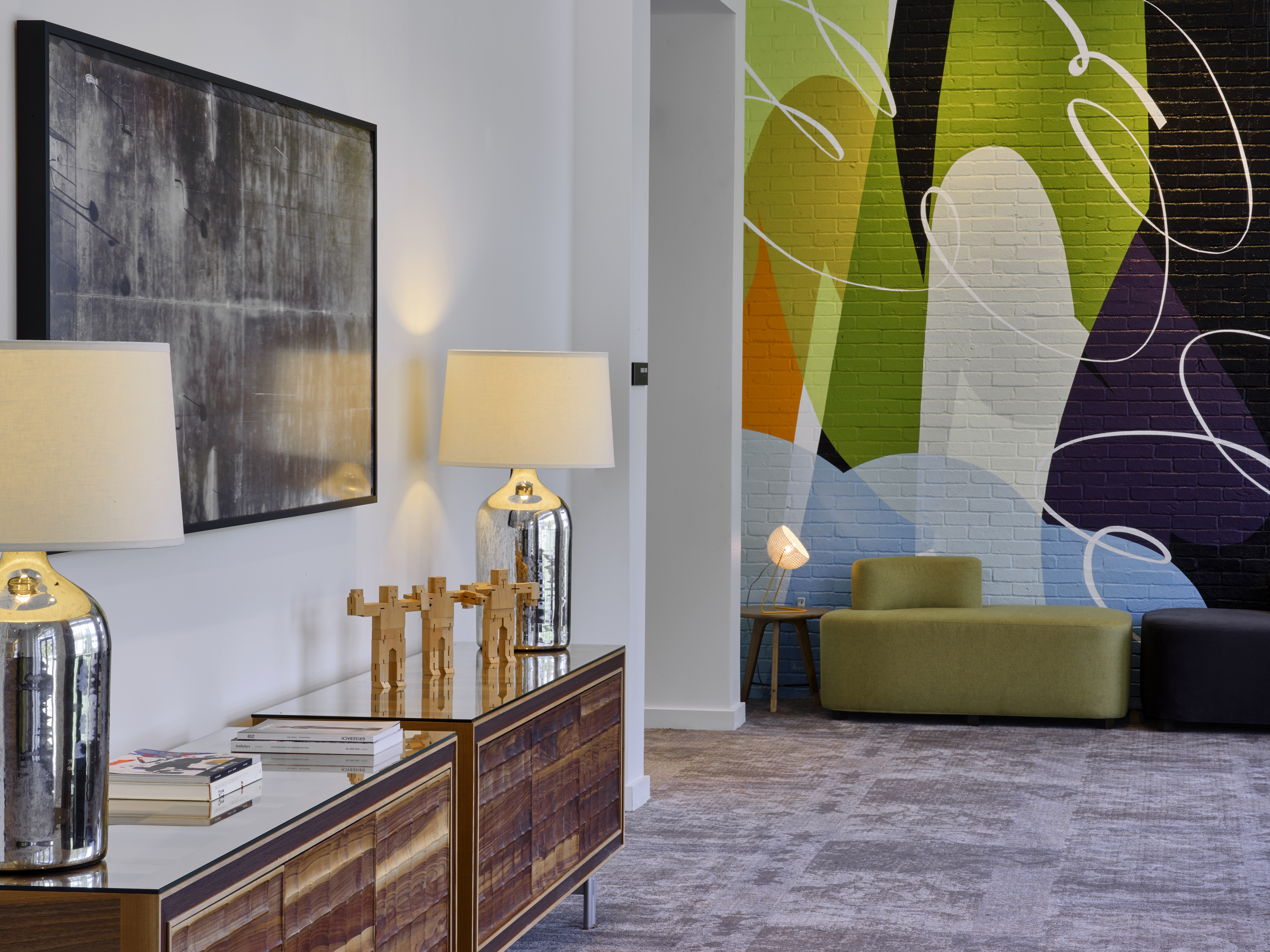
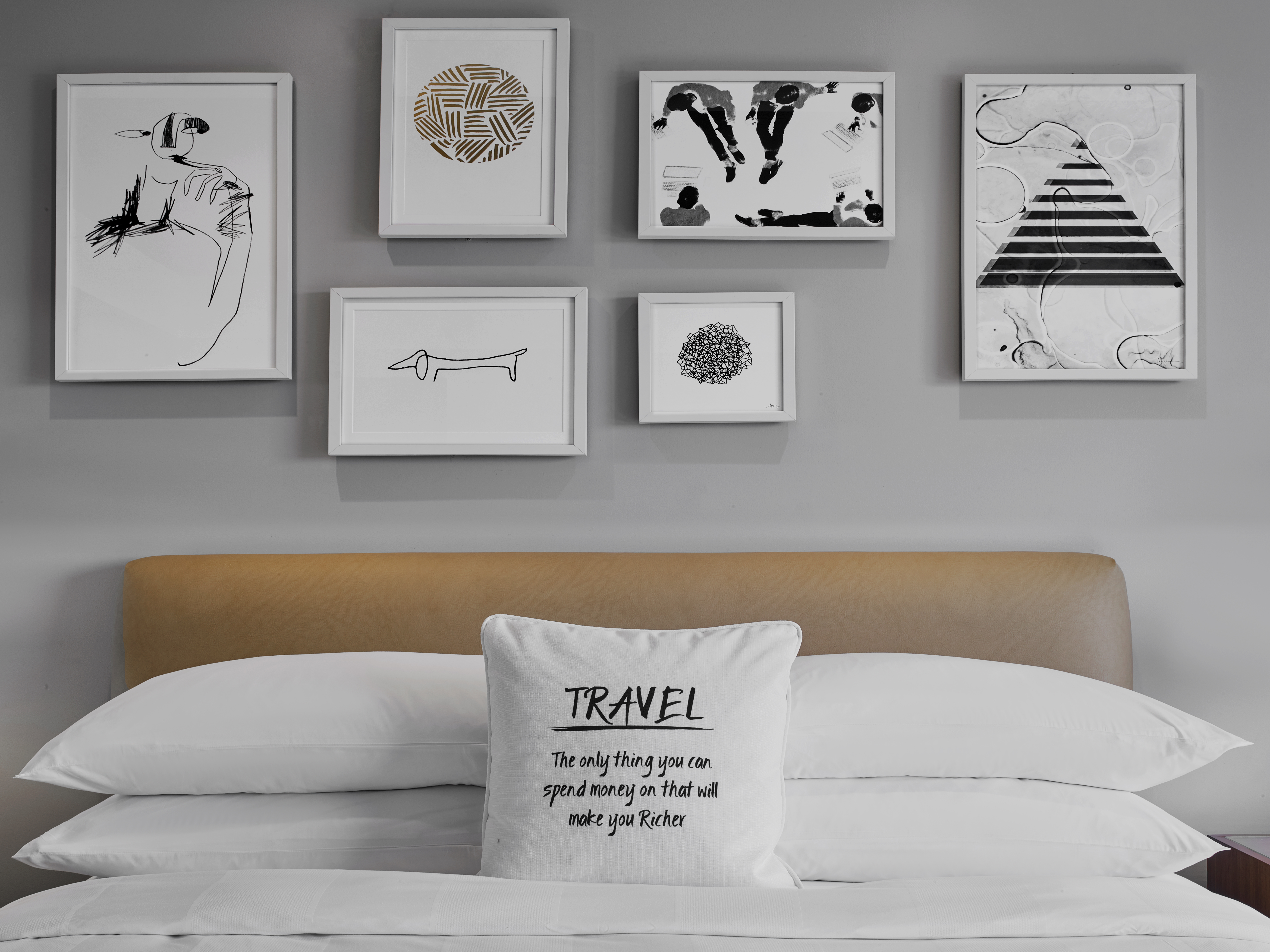
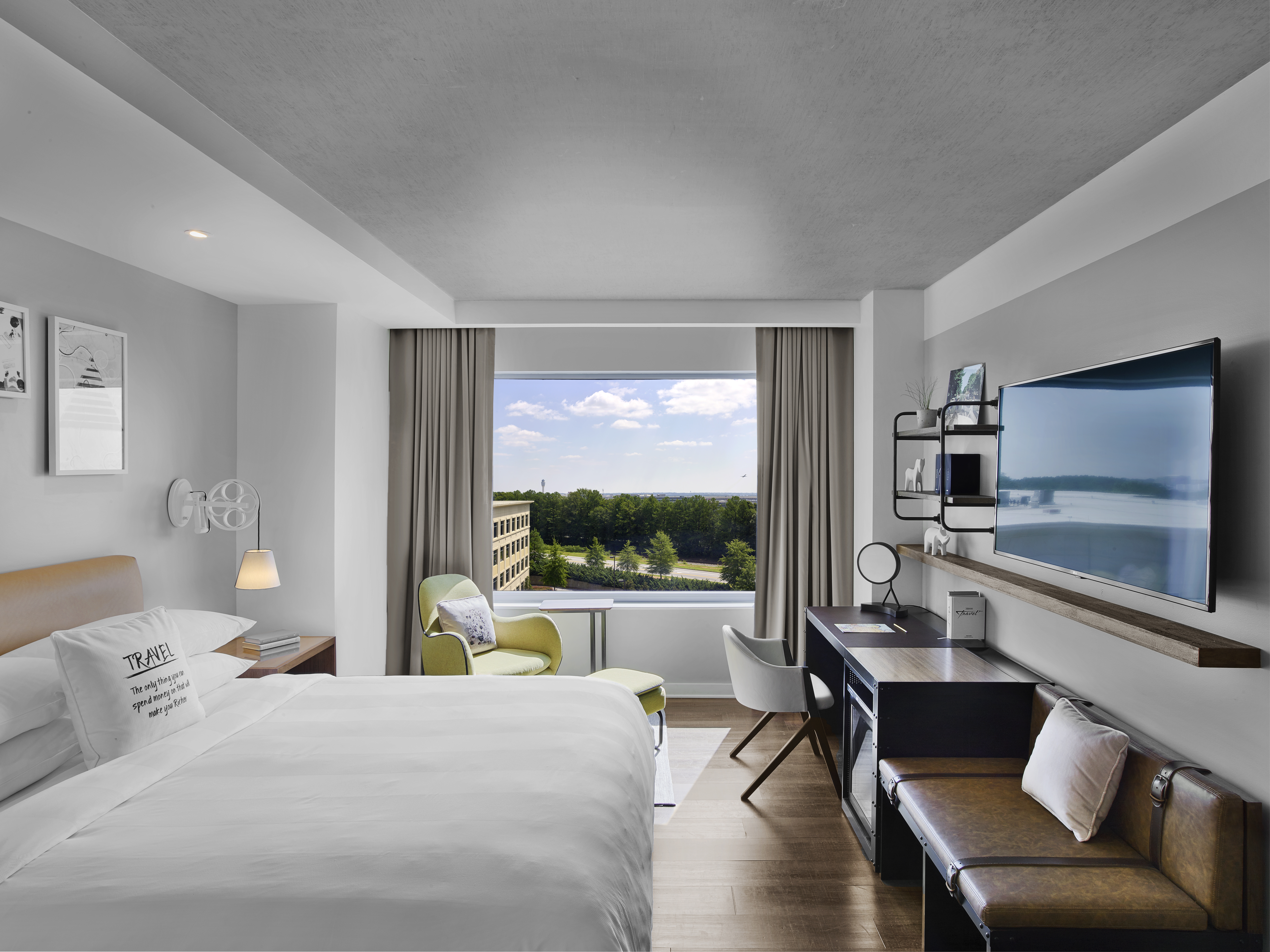
Taking Flight
A native of Waco, TX, Rottet began her illustrious career working for Fisher Friedman Associates where she focused on upscale apartments and condos, later moving to Skidmore, Owings and Merrill and eventually becoming a founding partner of Keating Mann Jernigan Rottet where she was synonymous with high-rise architecture and office interiors. When that firm was acquired by Daniel, Mann, Johnson & Mendenhall in 1994, she became director of DMJM’s interior design studio. “The commercial office business is very, very insular and a much quieter industry,” she says. “Unless you are picking up Interior Design magazine, for instance, you’re not going to hear about it.”
Rizzoli celebrated her career thus far with the hardcover, 336-page Authentic Design: Lauren Rottet and Rottet Studio in 2017, and not surprisingly, now that she’s made a name for herself in the more visible hospitality business, furnishings companies have come a-calling. She’s done a good bit of design work for names like Steelcase, Knoll and Bernhardt Design, and in addition to her own furniture line — Rottet Collection — marketed to interior designers, she has also launched lighting products with Visual Comfort. Though she is circumspect about timing, there’s more to come. While noting that Rottet Studio is also responsible for the design of all of the Viking Ocean and River Ships (the firm has done 65 to date), “I really want the product side of my business to grow because I would like more of a well-known residential name,” she says. “I guess I just want to make a mark on the industry with contemporary, thoughtful product.”



